

The neighborhood does not only have new buildings, but old ones too that resist I don't know how.
This house has been abandoned and two homeless live there.
Rua Basilio Telles, between Av José Malhoa e Av Columbano Bordalo Pinheiro.




Looking at the oposite side of Av. José Malhoa (Yesterdays photo) you see the Twin Towers.
"This complex is the most known work of foirmer architect Olga Quintanilha, who unfortunately died on september the 13th 2005.
This 70.000 square meters complex is used for commerce and habitation, is based at Sete Rios and is inserted between Avenida Jose Malhoa and Rua de Campolide intersection.
Very polemic as it was the first complex to raise higher than 25 floors with its 28 floors, with the aproval of former district president João Soares.
On the lower part you can partially see the small shopping center which has 2 rooms for cinema, small (but very expensive) stores and an area with fast food restaurants and others." [*]

I'll take advantage of being at home for some days to show you my neighborhood.
This photo is of Av. José Malhoa, street that should contain the major concentration of hotels in Lisbon. Often when I go out turists ask me indications on a map.
In the background you see the beautiful Mosque of Lisbon.
I worked many years on this street in the building at the right with the green banner.
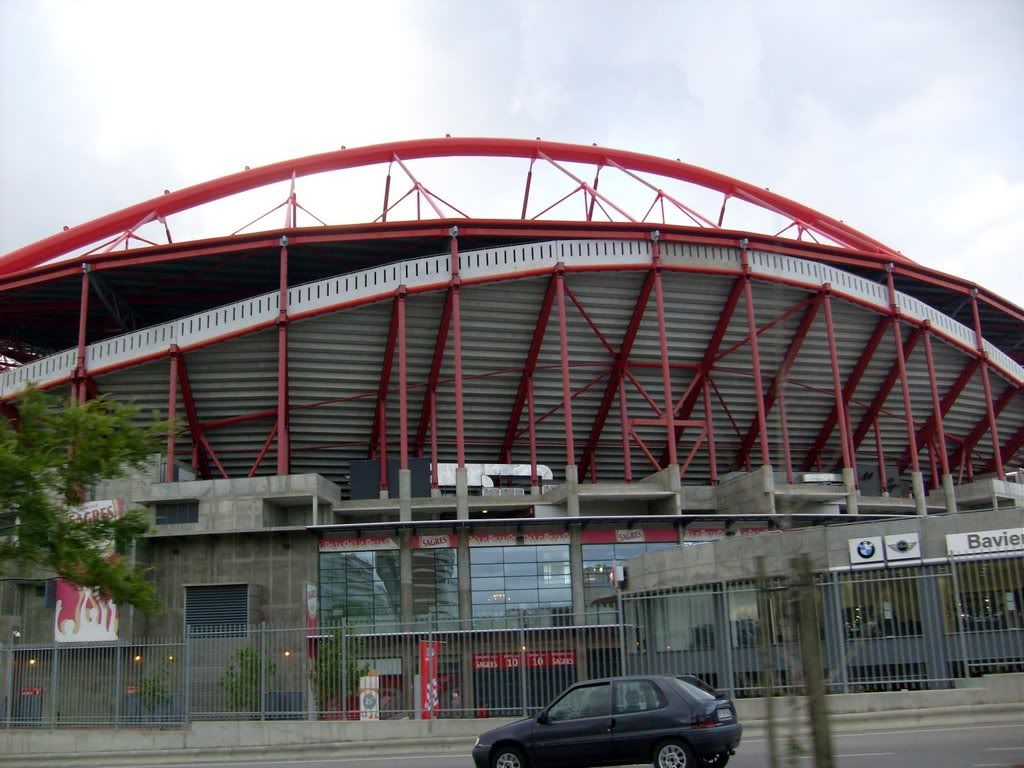

"The Estádio da Luz (pron. IPA: [ɨʃ.'ta.di.u dɐ luʃ]), officially named the Estádio do Sport Lisboa e Benfica and commonly mistranslated as Stadium of Light, is a football stadium in Lisbon, Portugal, the home of SL Benfica. It is also called A Catedral ("The Cathedral") by Benfica's supporters.
Luz is actually the area of Lisbon in which the Estádio da Luz stands and the word 'luz' happens to also mean 'light'. As the people of Lisbon often referred to the original stadium, demolished beginning in 2002, as simply the light, the common English name for the stadium became the stadium of light. The Stadium of Light in Sunderland, England may well have been inspired by this Lisbon example, though it has other well established reasons for bearing the name.
It hosted several matches in the 2004 European Football Championship, including the final. The previous Benfica stadium (also called "Estádio da Luz" and one of the largest stadiums in the world with 120,000 seats) was demolished and the new one was built for the tournament with an official capacity of 65,647. The architect, Damon Lavelle, designed the stadium to use as much natural light as possible. It is classified by UEFA as a 5 star stadium, allowing it to host major European cup finals. The original Estádio da Luz, opened in 1954, hosted the 1992 European Cup Winners' Cup final before a crowd of well under 120,000, its absolute capacity in those years. Before that final it also hosted the 1991 FIFA World Youth Championship final held in Portugal with an impressive attendance of 130,000. The original stadium replaced Estadio do Campo Grande."[*]



"IT’S EASY to walk around Lisbon’s downtown Baixa Chiado shopping area with your eyes figuratively shut and never notice the façades of the shops you enter. Yet, the route from Largo de Camões as far as Praça do Rossio is steeped in history (...) It was in the mid to late 19th century that the shopping zone took on the general appearance that it has today. Before then, shops were generally divided between open air markets or discreet boutiques for the rich and wealthy. They didn’t over-advertise themselves, have large windows or showy displays that could attract thieves and robbers. If you had the money, you were in the know and knew where to go. (...) Other gems worth looking out for include Vitrine (formerly Salon Trianon) dating from 1924, Au Bonheur des Dames, which was once a perfume shop, and Edifício Grandella, which had been one of Portugal’s first Harrod’s style department stores. These can be found on your way down towards Rossio." [*]





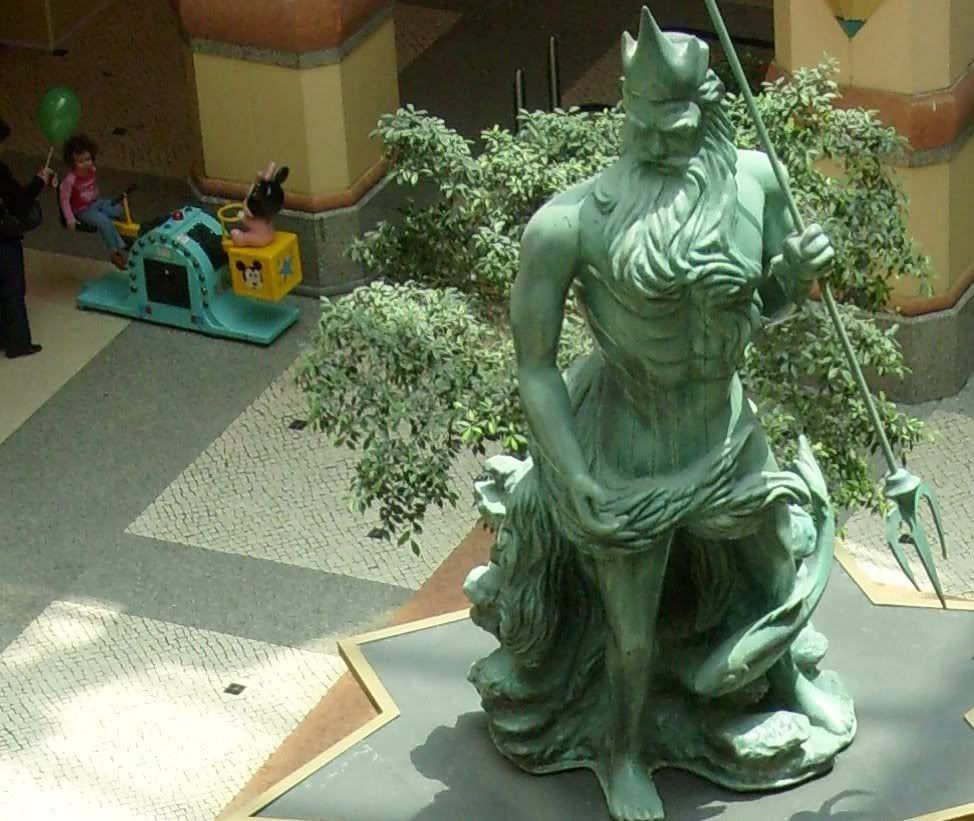
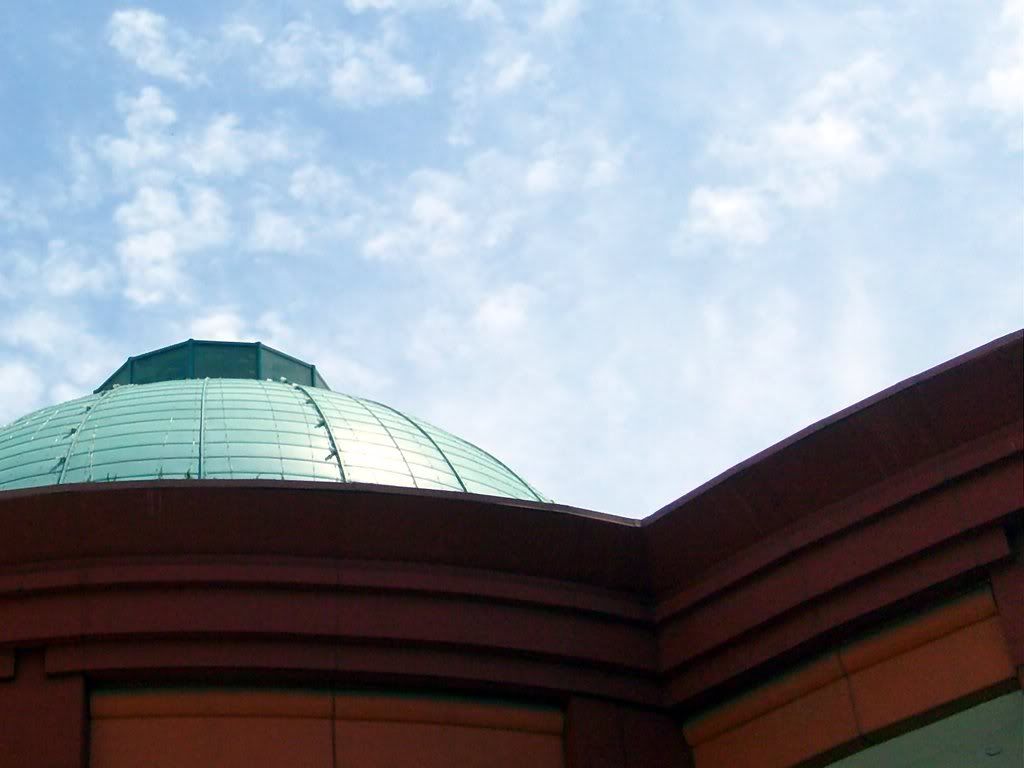
The Colombo Shopping Centre was inaugurated on September 29, 1997, has 427 stores and 120 thousand square meters, and thus the largest commercial center of Europe.
The architecture of the area is based on the time of the Portuguese Discoveries, one of the most important periods of history of Portugal. The squares and streets in the center have names depicting it, such as Avenue of Discovery and Square Tropic of Cancer. It has quite trade, as a kind of private city.
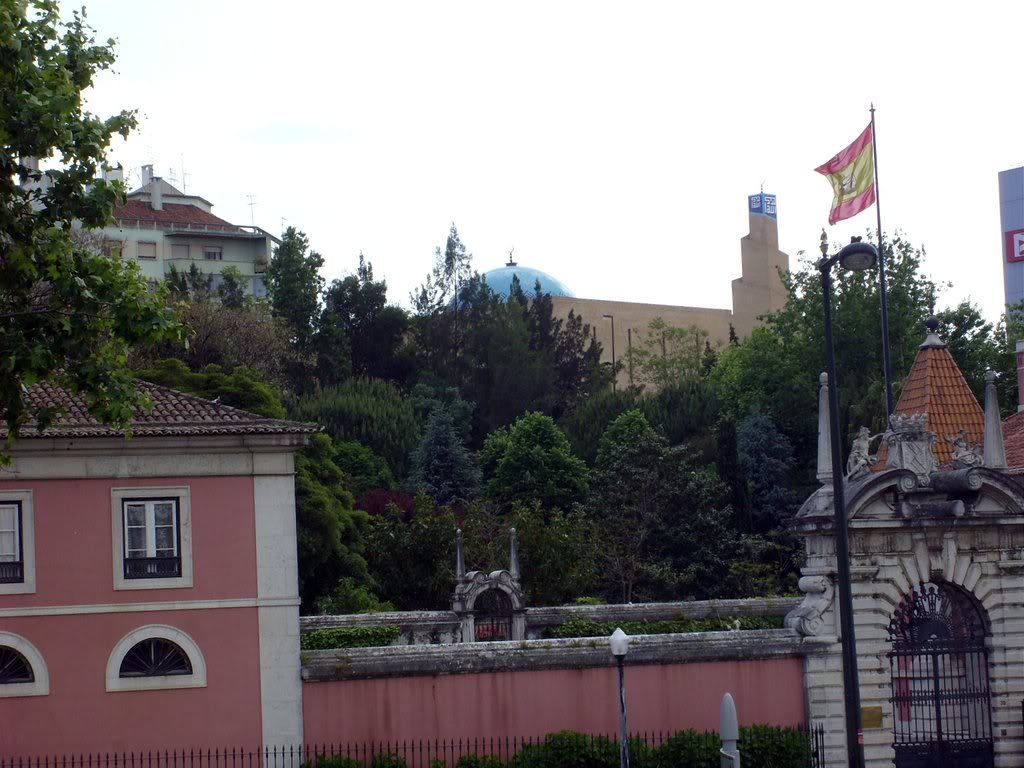
"The Mosque of Lisbon was built on the street to the Mosque, (Blue Neighborhood), near the Plaza of Spain.
It is kind of prayer room with oriental wide, dominated by a dome, and with Minarete ramp outside. It was built between 1979 and 1985 with the help of a large group of Islamic countries, the commitment of the Islamic community of Lisbon and the City of Lisbon which ceded the land. It also aims religious and social support to Muslims living, temporarily or permanently the area of the city. The mosque is for believers place of prayer and meditation individual and collective space and a much appreciated rest, peaceful coexistence and sharing society.
The Iberian Peninsula was Muslim territory since the seventh century until at least the sixth century, but in the south Islam remained longer, in some places by the end of the fifteenth century. Luxbuna, Lisbon Muslim, was conquered by Christians in 1147, but the community of believers was organized in Lisbon to the Moorish quarter of the sixteenth century around its two mosques and "Madrassa".
The influence of civilization and art in the Muslim way of being and living in Portugal and Spain was very deep and in many ways still remains. Islam currently has more than 950 million believers throughout the world, particularly in Asia (650 million) and Africa (270 million). "
Curiously I hardly find information about the magnificent palace (Palace of Palhavã) where the Embassy of Spain in Lisbon is located.
Dedico o post de hoje ao Tatau que está em Madrid e apesar de vir todos os dias visitar este blog nunca disse um Alô. :)
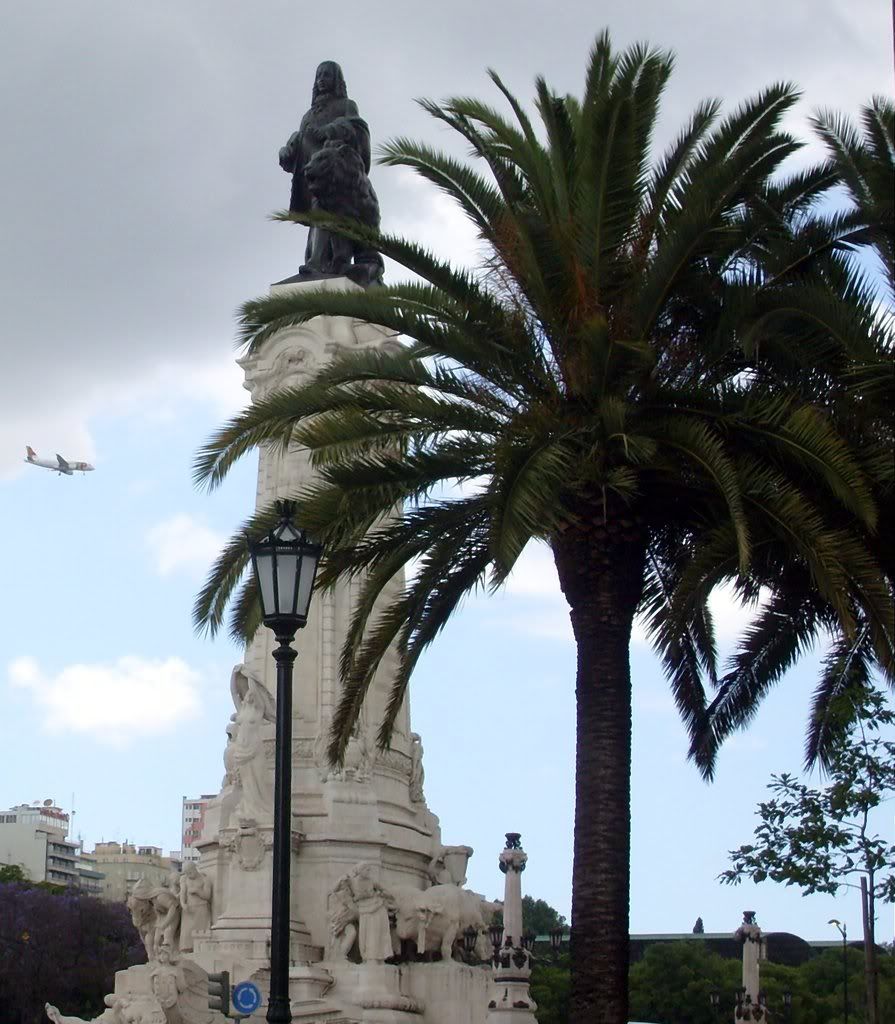

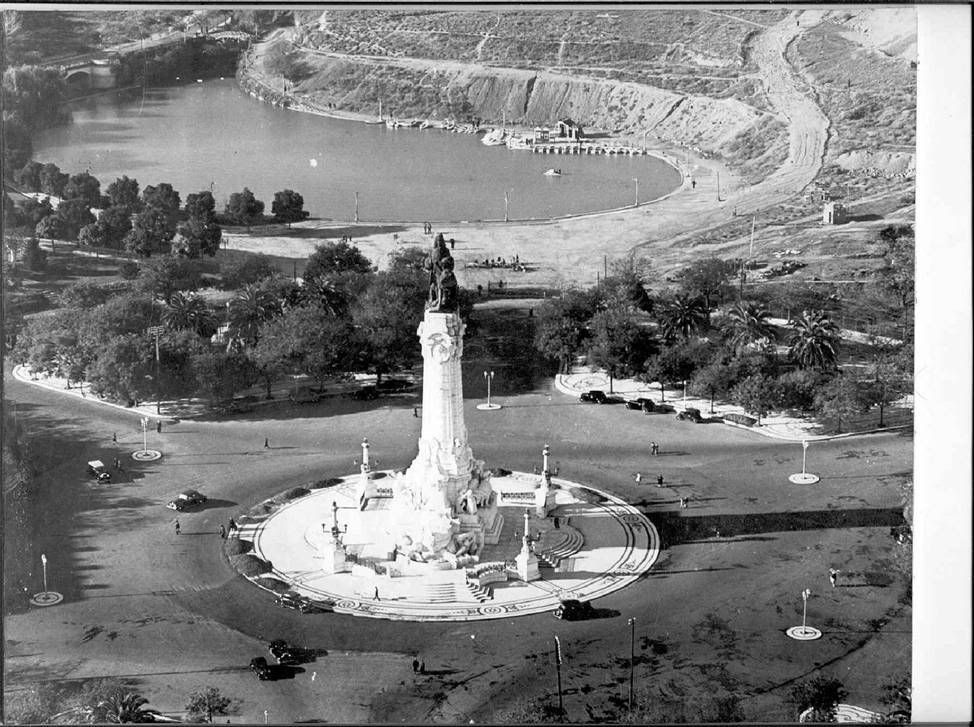

In this photo you can see a view of Lisbon, taken from my mothers balcony. In the foreground is the park Eduardo VII, and next the São Jorge Castle, and then the Tagus River. Fantastic, isn't it?

Maternidade Alfredo da Costa
The Parenting Alfredo da Costa is located in the parish of São Sebastião da Pedreira. It was built on the foundations of a temple, with the project architect Miguel Ventura Terra.
The first maternity in Lisbon to be designed and built from scratch was inaugurated on December 5, 1932. He was its founder and first director Professor Augusto de Almeida Monjardino. It appears that the work of special protection and defence of pregnant women have taken beginning in 1755, after the earthquake that destroyed more than half of the city of Lisbon. One of the buildings destroyed, not only by the earthquake but also by the subsequent fire, was the All Saints Hospital, whose patients had to be transferred to the College of St. Anthony. This building was once outside the main house of Jesuits and was seized with all other property.



This newest bridge in Lisbon, Ponte Vasco da Gama, enables north-south traffic to bypass the Portuguese capital and was built as an alternative route to the 25 de Abril Bridge, frequently congested with traffic jams especially during the rush-hour periods.
This seemingly never-ending bridge is a Cable-stayed bridge. The builders took special steps to protect a local bird sanctuary and rehoused 300 families, who were living in slums, to much better accommodation
Vasco da Gama is the largest bridge in Europe with a length of 17.2 km (10 miles), 10 km of which are over the Tagus river. It was inaugurated on the 4th of April 1998. Located right next to the Nations Park (former site of the Expo 98) it got its name on the same year of the 5th centenary of the arrival of Vasco da Gama to India.
The bridge was designed to withstand an earthquake four times greater than the 1755 earthquake that devastated Lisbon. [*]

In Público (22/4/2008)
«O que faz uma sereia quando lhe cortam a água? Vai nadar para outras paragens? Definha até por fim a bela cauda se lhe transformar em duas pernas? Aluga um jacuzzi? Vai para dois anos que a fonte do Rossio virada ao Teatro Nacional D. Maria II está sem pinga de água, para desespero das belas figuras que a ornamentam. Nos primeiros tempos de seca, a Câmara de Lisboa optou por esconder as ousadas raparigas atrás de um tapume que não as deixava sequer ver uma das praças mais bonitas e mais fotografadas da cidade. Depois seguiu-se uma segunda fase de encarceramento, um regime de liberdade provisória em que já só havia uma rede a separar as sereias do resto do mundo. Convencido de que não havia, afinal, a esperar delas nenhuma espantosa fuga cidade fora, quem sabe se até ao mar, o actual executivo municipal retirou dali a vergonhosa vedação que as rodeava e voltou a mostrá-las ao mundo como elas nunca deviam ter estado: despidas de água, ao contrário das suas irmãs da fonte do lado oposto da praça, que continuam a fazer as delícias de quem gosta de chapinhar nos dias quentes. Razões para tamanha maldade, a câmara não apresenta nenhumas. Resta às sereias rezar - rezarão as sereias? - ou ensaiar uma dança da chuva de cada vez que sentirem a pele encarquilhar-se ao sol.»
"What does a mermaid when it cut the water? Swim to other lands? Decline until finally the beautiful tail turn on two legs? Rented a Jacuzzi? Its been two years since the Rossio fountain facing the National Theatre D. Mary II is without water, to despair of the beautiful pictures that adorn. In the early days of drought, the Board of Lisbon opted to hide the beautiful girls behind a tapume so they can not even see the one of the most beautiful and photographed squares of the city. Then followed by a second phase of imprisonment, a system of provisional freedom in which we only had one network to separate the mermaids from the rest of the world. Convinced that there was, after all, none of them expect the astonishing escape outside town, who knows if to the sea, the current executive municipal withdrew away the shameful that the fence around again and show them the world as they never should have been : stripped of water, unlike their sisters fountain of the side of the square, which continue to be the delight of those who likes splashing in the hot summer days. Reasons for such evil, the camera does not present any. It remains to pray mermaids Or tested a dance of rain each time you feel the skin shrink in the sun. "
In Público (22/4/2008)





One of the many things I learned in blogs is that there is always a different duckling.
Different doesn't mean ugly, as ever learned by the stories.
Indeed in my point of view, is the difference that makes everything more interesting.